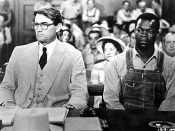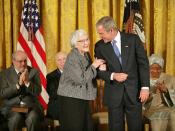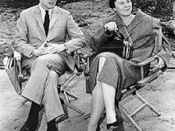Prejudices in "To Kill A Mockingbird"
The act of pre-judging is and was a common occurrence in society. People have experienced prejudice in the past, and people still continue to experience it today. Back then, it was considered normal to be prejudiced, and for that reason, the majority of people were intolerant, especially in the southern United States during the 1930's. In Harper Lee's best selling novel, "To Kill A Mockingbird", Harper Lee, having lived through the 1930's, depicted many forms of prejudices at realistic extents. The major types illustrated in the novel are racism, discrimination of social class, and sexism.
Whether it was the white people discriminating against the black people, or the blacks discriminating the whites, racism is evidently the key type of prejudice in the novel. "Your fathers no better than the niggers and trash he works for!" This was said by Mrs.
Dubose and was meant to express that blacks are as bad as trash; no matter what
the content of their character is like. A major event that takes place in the novel is the persecution of Tom Robinson, a gentle black man. While the evidence clearly proved his innocence, the jury still found him guilty. A black man's word was never as good as a white woman's. Although the novel mainly revolves around black people being victim to the cold ways of the whites, Harper Lee also showed that black people were racists as well. She showed this by including a scene in the novel where Lula confronted Calpurnia about bringing white children to a "nigger" church. Despite the fact that both races were
prejudiced, black people were still considered to be a lower class then the whites. In fact, black people were considered to be the lowest...


